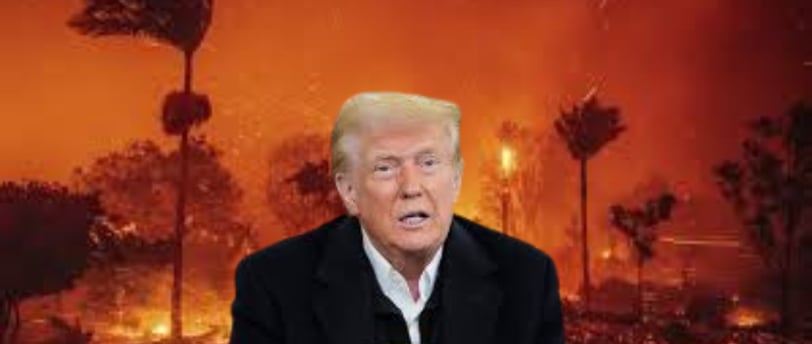Trump's Controversial Proposal: Eliminating FEMA Amid Disaster Tours
President Donald Trump recently proposed "getting rid of FEMA" during a tour of disaster areas in California and North Carolina. He criticized FEMA for being too bureaucratic and slow, suggesting that federal funds could be sent directly to states for disaster relief instead. The Federal Emergency Management Agency plays a crucial role in responding to natural disasters, providing assistance for recovery efforts when local resources are overwhelmed. Trump's comments reflect his broader stance on limiting federal involvement in disaster management. The proposal raises concerns about the potential impact on communities in need of timely aid. Trump's suggestion to eliminate FEMA could have significant consequences for the future of disaster relief in the U.S.
USA


Trump Proposes ‘Getting Rid of FEMA’ While Touring Disaster Areas: What It Means for the Future of Disaster Relief
During his recent visit to California and North Carolina, President Donald Trump made a surprising proposal that has sent shockwaves through both political and disaster relief communities. While surveying areas devastated by natural disasters, Trump suggested that the United States might consider “getting rid of FEMA” (Federal Emergency Management Agency), calling it too bureaucratic and slow in its response to disasters. This statement marks the latest in his ongoing debate over how the federal government should handle disaster relief.
What is FEMA and How Does it Operate?
FEMA, established in 1979, is the agency tasked with coordinating federal disaster response when local resources are overwhelmed. When disasters like hurricanes, wildfires, or tornadoes strike, FEMA works alongside local authorities to provide aid such as financial assistance, debris removal, and temporary shelter. The agency also reimburses local governments for the costs associated with recovery efforts.
FEMA’s role is vital in ensuring that affected communities receive necessary support in the immediate aftermath of a disaster. The agency’s function is especially crucial for states that are unable to manage the scale of disaster relief on their own, offering both a lifeline to residents and local governments struggling to recover.
Trump’s Criticism of FEMA and Proposal to Shift Relief Funds
Trump’s criticism of FEMA came during his visit to California, where wildfires have ravaged large portions of the state. While speaking about the recovery efforts, he labeled FEMA as “a very big disappointment” and criticized its bureaucratic red tape, suggesting the process was far too slow for those in desperate need of assistance. He also hinted at the possibility of moving federal disaster funds directly to states, bypassing FEMA altogether.
In North Carolina, where residents are still struggling to recover from Hurricane Helene, Trump’s comments took a similar direction. He indicated that he preferred states to handle their own disaster relief efforts, saying, “Let the state take care of tornadoes and hurricanes and all the other things that happen.” This proposal, if implemented, could radically change the structure of disaster relief in the U.S. and may have significant implications for the effectiveness of recovery efforts in future emergencies.
What Would the Elimination of FEMA Mean?
If FEMA were eliminated, the responsibility for managing disaster response and recovery would shift entirely to state and local governments. While this might offer more autonomy to states, it could also lead to inconsistencies in how resources are distributed, especially in regions that lack the infrastructure or funding to handle large-scale disasters independently. FEMA's role as a centralized agency allows it to mobilize resources quickly and efficiently, something that might be harder to achieve if the task were decentralized.
Moreover, critics argue that eliminating FEMA could leave vulnerable populations—such as low-income families and people without access to strong local government support—without crucial aid in times of crisis. As Mike Coen, former FEMA chief of staff, pointed out, the federal government must ensure that Americans are supported during their worst moments, regardless of their location.
What’s Next for Trump’s Proposal?
While Trump’s proposal is still in the early stages and may be more of an idea than an official policy push, it’s clear that his stance on disaster relief is evolving. His recent comments reflect a broader conservative belief in limiting the federal government’s role in certain areas, particularly in the aftermath of disasters. However, many argue that eliminating FEMA entirely would be a risky move, especially as climate change continues to exacerbate the frequency and severity of natural disasters.
As Trump moves forward with his tour of disaster zones and his campaign rally in Las Vegas, it will be interesting to see how this idea evolves and what kind of support or opposition it garners. Will his vision for disaster relief reshape FEMA, or will it spark a wider conversation about the future of federal aid in crisis situations?
